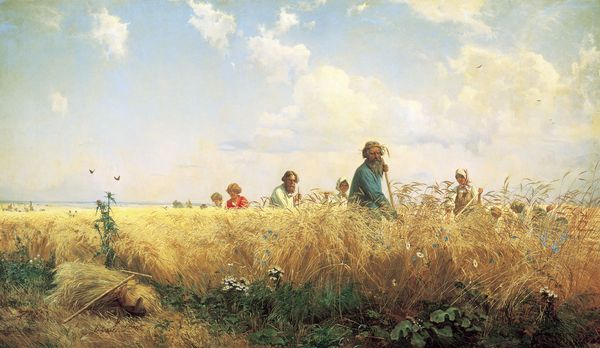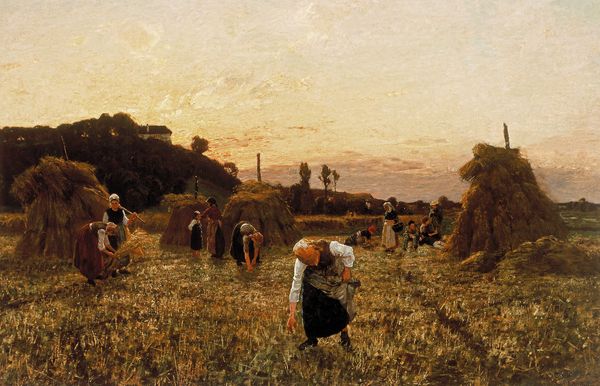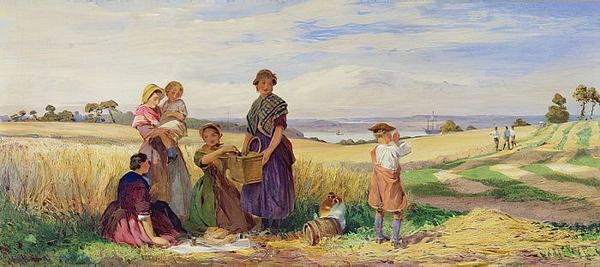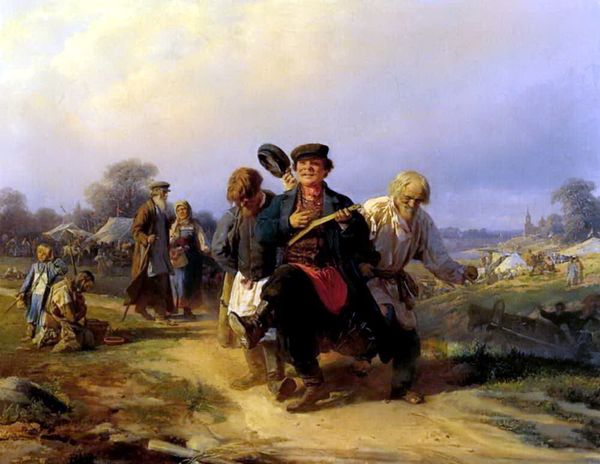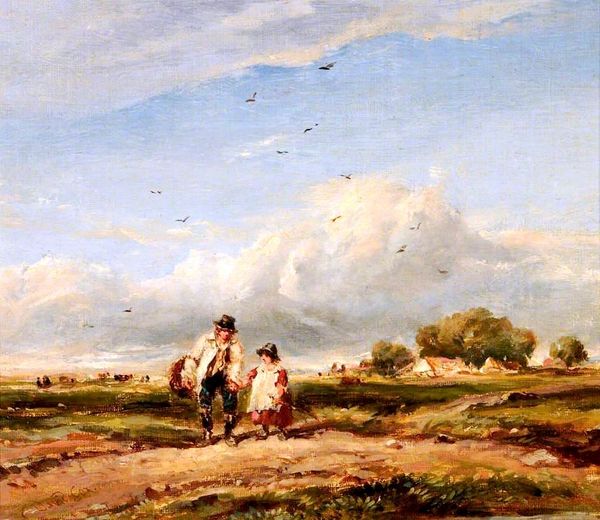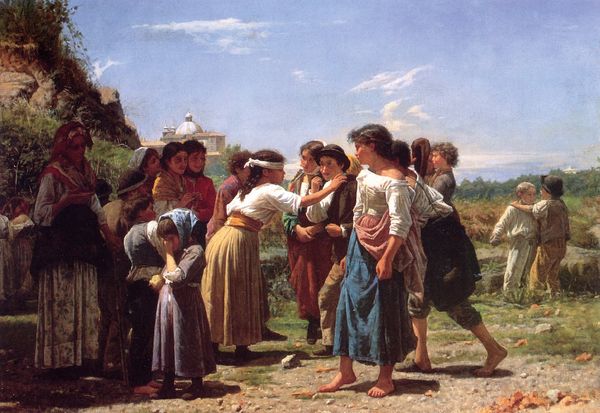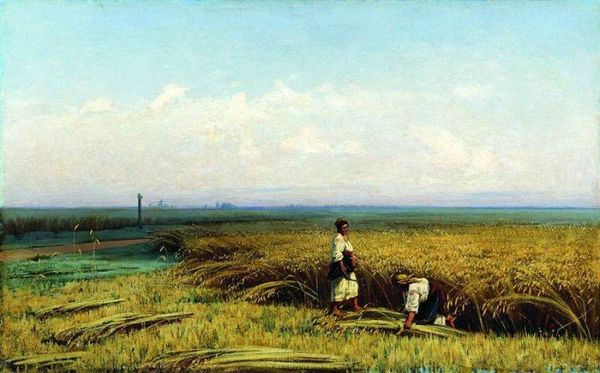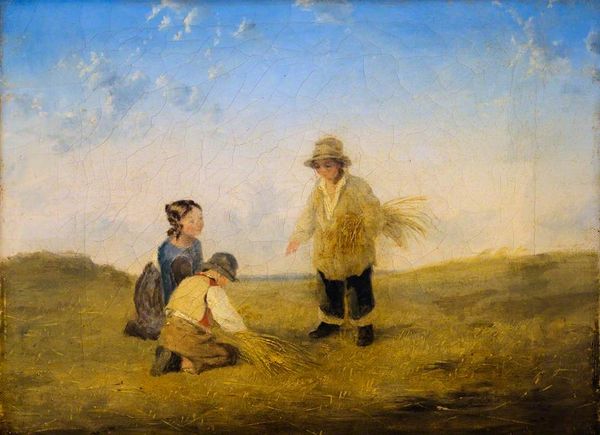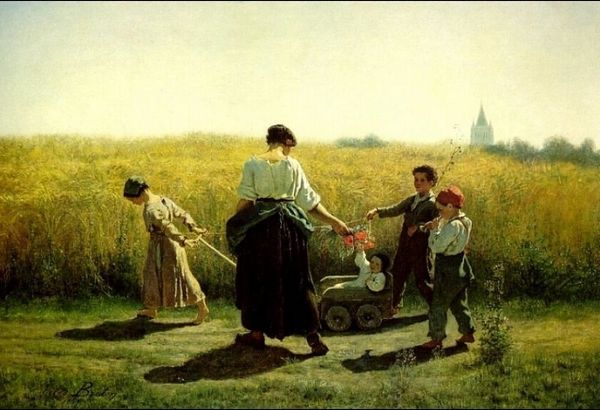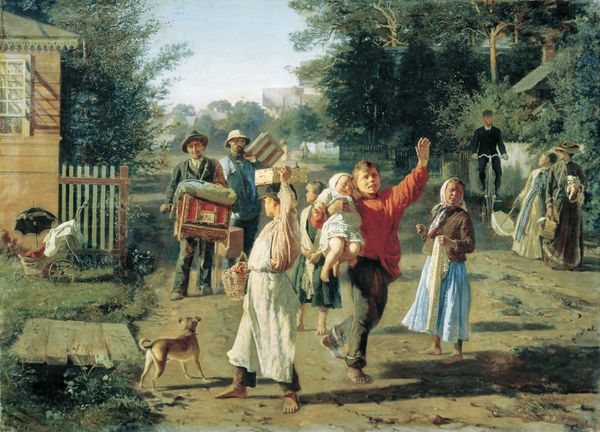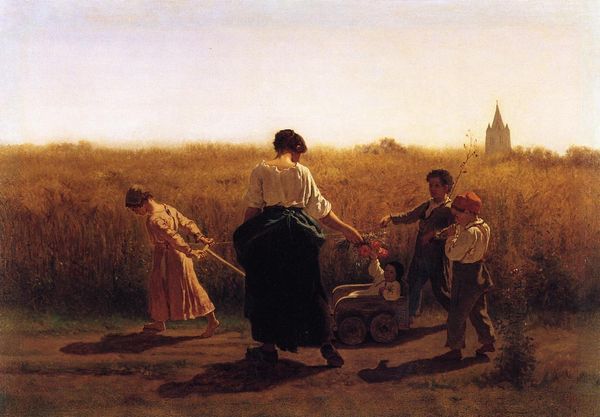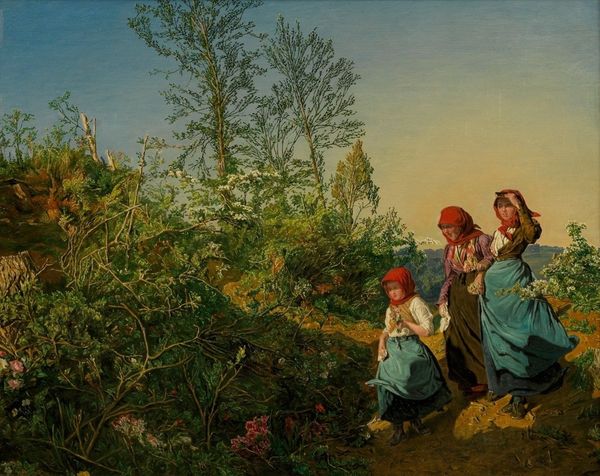
Dimensions: 28 x 34 cm
Copyright: Public domain
Curator: Carl Spitzweg’s “Sunday Stroll,” painted in 1841, offers us a glimpse into a romantic vision of German life. The work, executed in oil paint, presents a family walking through a field of golden wheat. Editor: My immediate sense is one of gentle quaintness. It’s a little dreamlike, the figures almost floating within the golden landscape, their elaborate clothes hinting at aspirations just slightly out of reach given the humbleness of their stroll. Curator: Indeed, the figures and their clothing draw focus. It is crucial to note the attention to material— the fabrics, the way the light interacts with the dyes, hinting at their construction, and the social stratification suggested by these elements. Editor: Exactly. The fact that the family is in the field is interesting to consider. The stroll on what appears to be their day of leisure can be seen as the construction of gendered roles of the women and the power roles displayed in their dress and tools to tame the wild of nature represented by the golden wheat. The male figure in the image is placed towards the front, in the golden field with no sun umbrella nor any burden to carry besides his lifted hat. Curator: Precisely, and considering Spitzweg’s own middle-class background as a pharmacist, one can speculate as to how the production of pigments and medications in his practice could intersect and influence his approach to painting and constructing his subjects' roles and identity, a way to visually display social status. Editor: The work can be interpreted on various levels. What resonates most profoundly, at least for me, is the image of domesticity that Spitzweg crafted—but not without an edge of irony. Are they merely observing nature, or is this stroll about maintaining and reinforcing cultural norms? Curator: The painting technique further emphasizes this vision, doesn't it? The soft brushstrokes, the light diffused across the canvas – they contribute to an ideal that conceals as much as it reveals about the process of representing people’s place within their economic and cultural milieu. Editor: Agreed, considering the piece through today’s theoretical frameworks allows one to interrogate assumptions, not merely about that particular moment but of similar portrayals of “leisure” that serve other purposes than appearing picturesque. Curator: Precisely, I appreciate having shed some light on this canvas by delving into how the work's components come together, literally and figuratively, to reinforce our reading of the cultural values held when produced and its contemporary resonance today. Editor: It allows us to question not only their place in that era but also how society depicts identity constructs like power, gender, and privilege. Thank you!
Comments
No comments
Be the first to comment and join the conversation on the ultimate creative platform.
